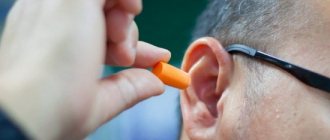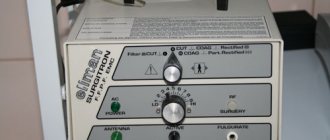Inflammatory eye diseases
develop as a result of a specific reaction of the body to damage or the introduction of a foreign agent, and constitute the main part of all ophthalmological pathology. If left untreated, these diseases can lead to serious complications: clouding of the cornea, decreased vision, and spread of the process to adjacent tissues and organs.
The inflammatory process can occur in any part of the eyeball: cornea, conjunctiva, sclera, iris, choroid. Most often in the practice of an ophthalmologist, pathology of the anterior part of the eye occurs.
Conjunctivitis
The conjunctiva is the outer membrane covering the eyeball and eyelids, which is the first to come into contact with harmful environmental influences. Therefore, conjunctivitis accounts for 60% of all inflammatory diseases.
According to the course, acute and chronic variants of the disease are distinguished. Main symptoms of eye diseases
in the acute stage: redness of the conjunctiva, intense lacrimation, a feeling of “sand in the eyes,” intolerance to bright light, pain and burning. In the chronic form, bilateral inflammation always develops.
Keratitis
This disease occurs when the cornea (the transparent membrane at the front of the eye) is damaged. A distinctive feature of the pathology is a sharp decrease in the size of the palpebral fissure up to complete closure of the eyelids, which occurs due to irritation of nerve receptors. Other signs: increased sensitivity to light, lacrimation, intense pain, foreign body sensation. With a long course of the disease, ulceration of the cornea is observed.
Barley (hordeolum)
The disease is an acute inflammation of the sebaceous gland or hair follicle of the eyelid. The pathology has a characteristic clinical picture: first there is swelling and redness of the eyelid area, which may be accompanied by itching, burning, and a sensation of a foreign body. After a few days, the swelling thickens and a yellow dot appears in its center, which indicates the maturation of the abscess. Then the barley is opened with the release of pus. In severe cases of the disease, an extensive abscess forms with a tendency to spread to surrounding tissues.
Blepharitis
This eye disease is characterized by chronic inflammation of the edges of the eyelids of various etiologies. Local symptoms of the pathology: hyperemia and swelling of the eyelids, pain and burning in the eyeball, decreased clarity of vision. There may also be mucous or purulent discharge, which leads to sticking of the eyelids and the inability to open the eyes. With scaly blepharitis, intense fine-plate peeling of the skin of the eyelid is noted. With ulcerative blepharitis, superficial skin defects are formed, accompanied by inflammation of the hair follicles of the eyelashes.
Uveitis
Depending on the location of the lesion, anterior uveitis (iridocyclitis) and posterior uveitis (chorioretinitis) are distinguished. With iridocyclitis, pain and burning, intense lacrimation, redness, and decreased visual acuity are noted. Chorioretinitis is characterized by scant clinical symptoms. The disease occurs in a chronic form, the first signs are dull pain inside the eyeball, “fog” before the eyes, distortion of the shape of surrounding objects. Without treatment, the disease can result in complete loss of vision.
Causes
People often suffer from swelling in different parts of the body, which has many causes. Swelling in the eyebrow area is no different. The tumor can be caused by an external factor or an internal disease. The main reasons that can cause swelling of the eyebrows are considered to be the following:
NOTE. The information provided is not a substitute for an actual physical medical examination. Please visit your healthcare provider to determine the exact cause before starting medication.
Swelling due to illness and other factors
The first possible cause of eyebrow swelling is edema - this is swelling that occurs due to the retention of lymphatic fluid in the tissues and cavities of the body.
In this case, a swollen eyebrow is the result of fluid leaking from the capillaries that are located around the eye. Symptoms appear gradually. This swelling may be caused by a hidden infection. Other possible causes include: prolonged sitting or standing, surgery, high altitude, sunburn, pregnancy, and complete lack of physical activity. Serious medical conditions that can cause swelling are arthritis, pulmonary insufficiency, thyroid dysfunction, diabetes and liver disease. Associated symptoms will include:
- Swelling of the skin
- Itching
- Weight gain
- Increased heart rate
- Skin may appear glossy and tight
Treatment in this case most often involves eliminating the infection, if any. Otherwise, therapy will include:
- Diuretics are medications that help increase urination and remove excess fluid through the kidneys.
- Ranibizumab is a medicine approved in more than 85 countries that helps prevent and treat macular edema in diabetes.
- Control of blood vessel growth or therapeutic angiogenesis.
Injury
The eye is one of the most sensitive parts of our body. A hard object coming into contact with this area can cause damage, including a crack in the bone around the eye (orbital fracture), which can cause the eyebrow to swell.
Hard physical contact, such as a punch or ball to the eye, can cause this damage. A traumatologist should examine you and, depending on the extent of the damage, prescribe the necessary treatment.
Symptoms associated with orbital bone damage include red eyes, swollen eyebrows, and headaches. A combination of a warm compress and an anti-inflammatory will help relieve the swelling and pain it causes.
Epilation with thread or tweezers
While everything is clear with tweezers, not everyone knows enough about hair removal with a thread. This is an ancient method of hair removal that is more popular in the West. It is mainly done on the eyebrows for cosmetic purposes. This is one of the most hygienic treatments, no chemicals are used and the thread is only used once per person. This technique also reduces the likelihood of contact or atopic dermatitis, given that the only thing that comes into contact with your face is the thread.
Threading is an art and it is now becoming very difficult to find someone who can replicate the technique correctly. If done incorrectly, hair removal can damage the hair follicles, a condition known as folliculitis. Eyebrow pores can become clogged with dead skin cells and sebum or become swollen.
READ ALSO: How to visually hide a high forehead: successful women's haircuts
Eyebrow swelling caused by hair removal with thread or tweezers should not bother you. The symptoms will go away on their own in about a week. You need to keep your face clean and avoid further hair removal until the swelling goes down. Using a warm or cold compress twice a day will also help relieve swelling.
Botox injections
We all strive to maintain youth for a long time, especially women. Recently, cosmetic surgery and other facial procedures have become increasingly common. Research from one of the leading cosmetics companies has found that the number of people who resort to cosmetic procedures is increasing. One of these procedures is Botox injections.
Botox is used to treat certain muscle diseases and for cosmetic purposes to eliminate wrinkles by paralyzing the facial muscles. A drug made from botulinum toxin is injected into the facial muscles in specific locations.
When this procedure is performed poorly or too much Botox is injected, the muscles can swell. Therefore, Botox injections may be a likely cause of eyebrow swelling. Side effects of Botox include an allergic reaction, rash on the face and other parts of the body, itching, pain in the face or neck, muscle stiffness and nausea. If you experience the following symptoms, seek medical attention;
- Breathing problems
- Severe muscle pain
- Bladder control problems
- Itchy skin
- Vision problems
- Severe skin rash
- Irregular heartbeat
Ingrown hairs
Another reason for eyebrow swelling is ingrown hairs. This is a common occurrence among women due to the various methods they use to remove unwanted hair. These methods include waxing, tweezing, threading, and shaving.
When the above procedures are not followed properly, the hair follicles may become damaged. The pores become blocked, making it difficult for hair to penetrate the skin and it grows inwards. The pores can become filled with keratin, dead cells and tissue, forming a tumor, cyst or bump on the eyebrow.
This condition is not life-threatening, but if you notice swollen parotid or cervical lymph nodes, a painful, itchy rash or bumps, you should see a doctor. People with chronic diseases such as diabetes, cancer and HIV/AIDS should avoid taking over-the-counter medications without a doctor's prescription.
If there are no such serious diseases, then treatment will include:
- Warm compress at various intervals throughout the day.
- Antibacterial, antiseptic ointments and itching relievers.
- Corticosteroid ointments will help against itching and inflammation.
Allergy or irritation
Eyebrow swelling can also be caused by an allergic reaction, such as to foods high in protein or vitamins, or to medications. Cosmetics such as face cream or lotion contain chemicals that can cause swelling due to skin irritation.
You need to see a doctor to find out what is causing this reaction. Avoid using any medications until the cause of the allergy is known.
Waxing
Waxing can also cause eyebrow swelling if not done properly. This occurs due to damage to the hair follicles, which causes clogged pores. It is also possible to have rashes and painful bumps caused by a buildup of keratin and dead skin cells in the pores.
To relieve pain, stop waxing for a while. You can use topical products such as anti-itch creams. If the lymph nodes begin to swell or other cold-like symptoms appear, an infection may be present. Then you need to seek medical help.
Swollen eyebrow piercing
When the piercing is not performed correctly or sterile instruments are not used, it can be a possible cause of tissue infection in the eyebrow area. Some people are also allergic to the metal used to make the jewelry. A wound on the eyebrows can also be a site for bacteria and other pathogens that cause infection if it does not heal for a long time.
READ ALSO: Eyebrow shapes based on face shape: photo, selection rules
When performing an eyebrow piercing, you first need to make sure that the instruments used are sterile and have been disinfected beforehand. Avoid using these instruments repeatedly as you may become infected or pass the infection from one person to another. Do not remove the jewelry immediately after the puncture; let the wound heal first.
After the piercing, you can clean the wound with an antiseptic such as methyl alcohol or hydrogen peroxide. If the swelling does not go away for a long time, or you notice swelling of the lymph nodes, itching and pain in the wound, you should seek medical help.
Swelling after eyebrow tattoo
In the days following the procedure, while your skin is healing, it may be swollen and itchy. This is completely normal. You may be tempted to soothe your brows with a cold compress. While it won't necessarily minimize swelling, a cold compress (NOT frozen), wet tea bags or facial tissues (not wet) applied lightly to the brows will help relieve discomfort. Just don't do this constantly, as repeated attempts to cool already injured tissue can actually increase the likelihood of skin damage and infection. Never apply pressure to your fresh tattoo and be very careful not to rub, scratch, peel or peel the area.
Swollen sinuses
Sinusitis is an inflammation of the sinuses (paranasal sinuses) - an empty space located behind the bones of the face and filled with air, which belongs to the nasal cavity. Sinusitis can be caused by fungi, bacteria, a virus, or an allergy. In mild cases, symptoms go away on their own without taking any medications. Depending on the location of the paranovic sinuses, there are several types of sinusitis. Swelling on the forehead or in the eyebrow area is a symptom of frontal sinusitis - inflammation of the frontal sinuses.
This condition is sometimes uncomfortable and painful due to swelling and inflammation. If symptoms do not disappear, you should consult a doctor. In extreme cases, complications and the development of an abscess in the eye area, eyebrows, forehead and even brain are possible.
Ophthalmopathy
Graves' disease (diffuse toxic goiter) is an autoimmune disease associated with the thyroid gland, which, among other things, causes swelling of the eye muscles and soft tissues in the eye socket (ophthalmopathy). When this happens, the eyeball moves forward (exophthalmos) and causes other symptoms. Symptoms typically include swelling of the eyebrows and persistent watery eyes.
This is a serious disorder and to counter this you need to visit an ophthalmologist as soon as possible. Treatment involves preventing the disease from affecting the eyes. Most often prescribed:
- Use of artificial tears
- Medicines and eye drops
- Depending on how severe the symptoms are, surgery may be indicated.
Treatment and removal methods
If a pimple appears on the lower eyelid, it can be treated in two ways. There are home and clinic methods for getting rid of rashes. The choice of means depends on the stage, clinical manifestations, and condition of the patient. Some formations cannot be eliminated with folk remedies, then they resort to medical methods. At the first symptoms, it is advisable to be examined by a dermatologist or ophthalmologist. The specialist will prescribe a course of treatment and prevent the occurrence and spread of complications.
At home
The pimple makes it difficult to blink and begins to itch. Removing rashes on the eyelid at home is possible in the first stages of the disease. Traditional therapy and pharmaceuticals will help eliminate swelling and symptoms.
- Dr. Komarovsky advises using iodine or alcohol to treat barley in the first stage. Use solutions carefully to prevent burns. Ointments based on antibacterial agents - tetracycline, erythromycin - cope with barley. Aloe juice diluted 1:10 with warm water helps relieve inflammation. Apply the product 3 times a day. The calendula plant treats acne. 1 spoon of flowers is poured with boiling water (a glass) and infused. As the tincture cools, moisten a cotton pad and apply it to the sore spot for 10 minutes 5 times a day. Used to remove swelling.
- In case of a pimple popping up on the eyelid or under the eyelashes, use Diclofenac or Maxitrol drops. Folk remedies based on blueberries will help eliminate the symptoms of inflammation. Compresses based on berry juice relieve redness and nourish the mucous membrane with beneficial substances. 10 procedures with a 2-week break is the required course of treatment. Green tea lotions relieve pain when blinking. A decoction of dried blueberries effectively fights the signs of the disease. As a result, the abscess will break through. The wound will heal over time. If you squeeze it out, it will take a long time to heal, leaving a stain.
In a clinic setting
If acne appears in the eye area or on the eyelids, it is advisable to consult a specialist. The doctor will remove the formations efficiently, leaving no consequences or complications. There are types: mechanical removal, electrocoagulation, laser therapy, curettage and surgical intervention.
- Diathermoelectrocoagulation. The method is based on the use of high frequency current on the boil. After the procedure, a crust forms on the spot. Over time it disappears.
- Mechanical removal. Conducted on a cosmetology chair. The duration of the manipulations is 10 minutes. The cosmetologist treats the area of the eyelid that he will work with and pierces the pimple with a needle. The contents can be removed with a special tool. The wounds heal quickly, leaving no scars. The number of abscesses that can be opened is 10.
- Curettage. A curette is an instrument that resembles a spoon. With its help, the cosmetologist removes the contents. The downside is the presence of scars. The skin should be treated with an antiseptic before and after the procedure.
- Laser therapy. Elimination of rashes on the eyelids by using laser beams at the site of the formations. The method is quite expensive, wealthy people can afford it. The action of the laser is a reliable and high-quality method, leaving behind a scab that falls off on its own after a couple of weeks.
- Surgical removal. In extreme cases, surgical intervention is resorted to. The surgeon removes the abscess, applies hormonal ointment and applies a bandage.
Advice from experienced doctors
In order to prevent the appearance of bumps on the eyebrows and speed up their treatment, you must follow the recommendations of doctors:
- Dress warmly, try to catch colds less often, and treat colds in a timely manner.
- Do not consume foods or contact surfaces that can cause allergies.
- Protect yourself from insect bites and spray with chemicals.
- See a doctor immediately after your eyebrow becomes swollen.
Under no circumstances should you squeeze out the cones yourself.
Lumps on the forehead above the eyebrows can be easily eliminated using special products and procedures. Removing a tumor above the eye under the eyebrow is much easier when the cause of its formation is known.
What to do if the eyelid is swollen with the appearance of a white dot
Swelling of the eyelid occurs due to many factors. The presence of complications, infections during squeezing, blockage of glands. In addition to the tumor, there is redness, a local increase in temperature, and pain. You can eliminate a pimple on the eye on the upper eyelid using home remedies and medication.
- Toothpaste – fights swelling, relieves redness and pain.
- Vishnevsky ointment or an alternative method - face cream and soda. Prepare the mash in equal proportions, apply to the affected area for 2 hours, fix with a plaster or bandage.
- Aspirin is an anti-inflammatory drug. 3 tablets of the drug are crushed, water is added. The resulting paste is applied to the pimple for 20 minutes.
Self-medication should not be abused. If the condition worsens, you should immediately consult a doctor.
Relief of swelling after epilation (with wax, tweezers or thread)
If the technology of this procedure is not performed correctly or the wrong tools are used, there is a possibility of damage to the hair follicles, and this can cause swelling and inflammation of the eyebrows.
The following tips will help relieve swelling after waxing:
- Cleanse your face with a soothing and antiseptic lotion
- To reduce redness, rub your face with an ice cube
- Use moisturizers such as baby cream
- Avoid wearing makeup.
Eyebrows swollen for no reason
Sometimes the eye can become swollen for no apparent reason. If medical examination does not reveal an infection, then it can be assumed that the cause is an autoimmune disorder.
Autoimmune diseases occur when the body produces antibodies that begin to fight your own body cells. This can lead to swelling and inflammation of the skin around the affected areas. In most cases, the condition does not go away on its own, and hormonal therapy may be required throughout life. Signs and symptoms of an autoimmune disorder vary from one person to another depending on how strong the immune system is.
The actual cause of an autoimmune disorder is unknown, but the following factors may trigger an attack by the immune system:
- Virus or bacteria attack
- Medicines
- Chemical irritants such as soap or body lotion
- Environmental irritant during climate change
READ ALSO: Sign: why a girl’s or man’s left eyebrow itches
Autoimmune disorders are chronic conditions for which there is no cure yet, but it is possible to relieve symptoms and prevent spread to other parts of the body with the following tips.
- Eat a balanced diet
- Make time for physical activity regularly
- Take Vitamin A
- Limit your time in the sun
- You need to reduce your overall stress level.
Kinds
There are different types of rashes. They differ in size and content.
Transparent watery
The acne presented is caused by disruption of the meibomian glands. The most common location is the lower eyelid. Older people who wear lenses have an increased risk of disease. Massage and medications will help achieve healing.
Purulent
Boils, acne, and progressive forms of stye have purulent contents. Initially, a red formation appears, after a couple of days it fills with pus and hurts. It is necessary to treat a subcutaneous pimple with antibiotics and antiseptic dressings. In critical situations, the boil is opened.
Blood
Swelling on the forehead above the eyebrow
The presence of swelling on the forehead may be the most noticeable sign of an infection or a simple allergic reaction to an irritant, also called contact dermatitis. Is this swelling serious or not? For many people, any unexplained swelling can be a cause for concern. For people with a strong immune system or those who exercise regularly and eat a balanced diet, this problem usually goes away within a day or two.
When the swelling is not caused by another condition, then a simple warm compress and the use of anti-inflammatory ointments or gel should help return the facial skin to normal. Otherwise, if the swelling does not go away after a week, you need to undergo a medical examination to determine the cause. Only after a complete examination will the doctor be able to prescribe adequate treatment.
Among all the reasons that cause swelling of the forehead, the most common are the following:
- Contact dermatitis is when the body reacts after physical contact with an irritant. It can lead to an itchy and painful rash on the skin.
- An autoimmune disorder occurs when the body begins to react abnormally to normal and healthy body cells.
- Allergic reaction to food or soap. For many people, various chemical components present in soap can irritate the skin, causing it to swell. Mineral composition in foods such as vitamins and proteins can also cause swelling in the same people.
- External trauma , physical damage to the face with a hard object, can cause swelling of the forehead.
Localization Features
They can spread to any part of the eye. Styes and white pimples form on the upper and lower eyelids, causing discomfort when closing and opening the eye.
Need advice from a beauty expert?
Get advice from a beauty expert online. Ask your question right now.
ask a free question
Acne and comedones chose the position under the eye. Occurs as a result of injuries, allergies to cosmetics.
Abscesses in the eyebrow area occur in people with excessive oily skin. With improper skin care, the number of formations increases.
Eastern doctors believe that rashes appear in people who harbor anger and negative emotions.
The use of anti-inflammatory drugs to relieve swelling
Anti-inflammatory drugs also have a positive effect after reactions associated with tattooing.
They generally relieve inflammation, improving the condition and relieving pain. Such drugs are divided into preparations of internal and local action.
The first include:
- Paracetamol;
- Acetylsalicylic acid;
- Ibuprofen;
- Diclofenac.
Ibuprofen is a remedy that should be in every first aid kit. This drug is listed by WHO as a vital and universal medicine with almost no side effects. The most popular anti-inflammatory local remedies include:
- Radevit;
- Belosalik;
- Voltaren;
- Beloderm;
- Ichthyol ointment;
- Syntomycin ointment;
- Indomethacin ointment;
- Retinoic ointment;
- Tetracycline ointment (with antibiotic).
Swollen eyebrow bone and headache
A swollen eyebrow bone is likely to cause severe pain. In most cases, this swelling indicates a more serious condition. This is often caused by damage to the orbital bone, which serves as the socket for the eyeball.
A common cause of orbital bone injury is external trauma and contusion. This can happen as a result of an accident or a blow to the eyebrow with a hard object. Other causes may include improper waxing techniques where severe tension occurs on the skin.
The most common visible symptoms of orbital bone swelling include:
- Strong headache
- Painful sensations in the eye socket
- Swollen eyebrow
- There may also be problems with vision
- Redness of the eyes
- Numbness of cheeks, nose and teeth
- Episodes of nosebleeds may occur.
When treating a damaged bone, you need to be very careful with the type of anti-inflammatory ointments you apply. You should also make sure that the product does not come into contact with the mucous membrane of the eyes, as this can lead to irritation. You can apply a cold or warm compress to your eyebrow to soothe the skin and prevent further swelling.
If symptoms persist or pain and swelling do not go away after a week, contact your doctor.
Causes and factors for the appearance of pimples
Pimples can pop up in unusual places. The appearance indicates a disruption of the body’s functioning, provoked by external and internal factors. The eyes are an important, sensitive organ. At the first symptoms, it is advisable to contact a specialist for removal. Causes:
- Increased sebum production. Disruption of the glands leads to their blockage.
- Weakening of the immune system. A decrease in the body's defenses can cause a rash on the eyelids. Hypothermia, frequent viral diseases, poor diet, and excessive exercise are the main factors in the development of acne.
- Disruption of the gastrointestinal tract. Digestive problems are the main problem that needs to be dealt with to eliminate acne. Before visiting a cosmetologist, you need to see a gastroenterologist.
- Cosmetics. Cosmetics do not always contain environmentally friendly substances. Companies forget about the need to use high-quality components that do not irritate the skin. The eyes are a sensitive organ that requires care. Incorrectly selected cosmetics cause inflammation and disrupt the structure of the skin.
- Allergy. One of the manifestations of an allergic reaction is a rash on the eyelid. Formations are provoked by cosmetics, food and all kinds of allergens.
- Injuries. Skin damage and infection are the main causes of acne. Infection can occur during poor-quality eyelash extensions.
- Hormonal disorders. An imbalance of hormones triggers the formation of acne. Pregnancy, lactation, adolescence are causes for rash.
Dysbacteriosis is the main cause of skin manifestations.
Why is the eyelid above the eye swollen and painful?
A number of reasons:
- Allergy. Flowering plants often provoke the problem. Swelling above the eyes in this case is not uncommon.
- Colds. First, the nasal sinuses swell, then uncontrolled lacrimation occurs. The upper eyelid swells and pain increases.
- Inflammatory process. Many eye diseases cause redness and swelling.
- Development of tumors of various types (benign, malignant).
- Problems with the cardiovascular system. Swelling above the eye often indicates heart pathology.
- Using low-quality cosmetics.
- Crying for a long time.
- Due to hormonal imbalance, the eye may become swollen and painful.
- Formation of xanthelasma. The accumulation of lipids causes swelling.
- Barley. Swelling is the first stage, then an abscess forms. It is impossible to squeeze out the formation. Blood poisoning may occur.
- Conjunctivitis. In a person, the mucous membrane of the eyeball becomes inflamed, which can cause swelling.
- Impaired metabolism. The eyelids may swell for this reason. No redness of the skin is observed.
In addition to swelling, the following symptoms often occur: general weakness, increased irritability.
Take the Attention Test! Find 10 differences! (click right here!)
Treatment
Treatment for a swollen eyebrow can only be performed when the actual cause of the swelling has been diagnosed. Most swelling goes away on its own without any medical help, but when there is a more serious underlying cause, the swelling is likely to return.
You should avoid self-medication. It is optimal for a professional doctor to study the symptoms and make prescriptions. Typically, the following remedies are used to treat a swollen eyebrow:
- Stitching for severe injuries and bruises of the orbital bone
- Ointments for topical use
- Painkillers such as paracetamol
- Vitamin A to strengthen the immune system
- Anti-inflammatory drugs
- Antibiotics
- Eye drops can be used to protect the eyes from infection.









